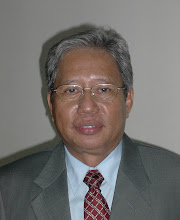Inventory of water resources development studies in Sarawak:
- Miri-Bintulu Regional Planning Study (1977)
- Kuching Urban and Regional Master Plan Study (1974)
- Bintulu Regional Master Plan Study (1977)
- Prefeasibility Study for Limbang Valley River Basin (1979)
- Master Plan for Power System Development (1980)
- Feasibility Report – Samarahan River Basin Development (1981)
- National Water Resources Study (1982)
- Bakun Hydro-Electric Project – Feasibility Report (1983)
- Master Plan Study for Sewerage and Drainage System for Bintulu and its Environs (1984)
- Feasibility Study for the Master Plan for Rural Water Supply Coastal Region of Sarawak (1986)
- Plan Study for Coastal and Riverine Transport in Sarawak (1990)
- Sarawak Water Resources Study Projects (1995)
- Sebangan Bajong Agricultural Development Project, Preliminary Design Report Volume 1 – 5, Government of Malaysia (1995)
Miri Town Drainage Master Plan Study, DID (1996)- Feasibility Study for a Multi Purpose Dam on Sungai Sarawak Kiri, Final Report, Kuching Water Board (1996)
- Bakun Hydroelectric Project – Green Energy for the Future, Economic Planning Unit, Prime Minister’s Department, Malaysia (1996)
- Kuching Water Supply Masterplan Study 1995 – 2000. Final Report, Kuching Water Board (1997).
- Urban Drainage Master Plan Study for Sibu Town, DID (1998)
- Kuching City Drainage Master Plan Study, DID (2000).
- Planning and Development of Sungai Maong Catchment Kuching (2000)
- Sg Sarawak Flood Mitigation Options Study, DID (2003)
- Assessment of the Current Water Resources Availability and Demand/ Consumption for the States of Sabah and Sarawak (2006).
- Sarawak Inland Waterway Transport System Study, UNDP/Sarawak Rivers Board (2008).
- The Sarawak Integrated Water Resources Management Master Plan Study, Working Draft (2008).
- Report on Supplementary Studies for Bengoh Dam, Jabatan Kerja Raya Sarawak, KTA (Sarawak) Sdn Bhd in Association with Halcrow Limited (2009)

Comments